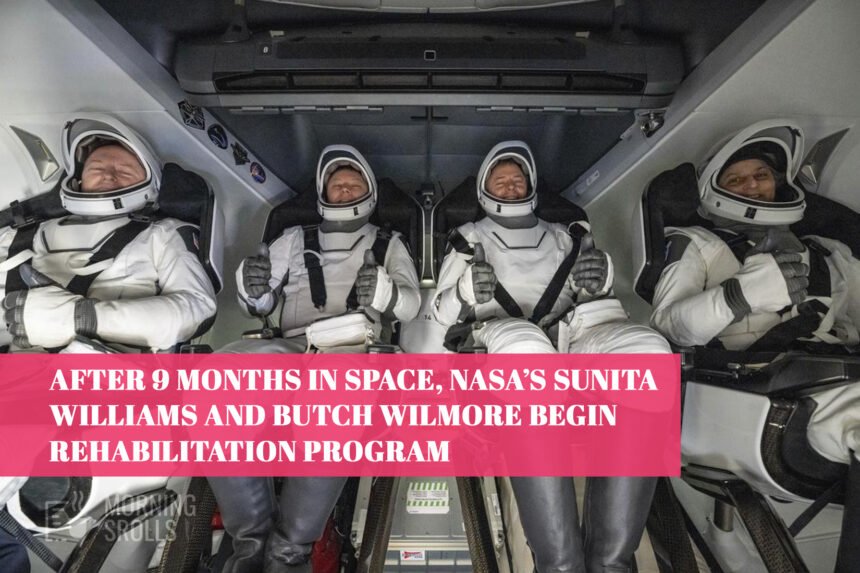NASA astronauts Sunita Williams and Butch Wilmore have safely returned to Earth after spending an extraordinary nine months aboard the International Space Station (ISS). Initially planned as an eight-day mission to test Boeing’s Starliner spacecraft, their stay was extended due to technical issues with the capsule’s propulsion system. The duo’s return marks the conclusion of a challenging yet historic journey, during which they orbited Earth 4,576 times, traveled over 121 million miles, and contributed significantly to scientific research in microgravity.
Safe Splashdown and Immediate Recovery
The astronauts landed aboard SpaceX’s Dragon capsule, named Freedom, which safely splashed down off the Florida coast early Wednesday morning, March 19, 2025 (Indian time). After a 17-hour journey from the ISS, recovery teams assisted them out of the capsule and conducted immediate medical evaluations. Their return process was carefully managed to ensure their safety after prolonged exposure to microgravity.
Physical Challenges of Microgravity
Spending extended periods in space poses significant physical challenges for astronauts. Microgravity causes fluid shifts in the body, leading to puffiness in the face and muscle atrophy in the legs (commonly referred to as “chicken legs”). Other effects include temporary height increase, reduced bone density, dizziness, and balance issues. These changes underscore the importance of structured rehabilitation upon their return.
45-Day Rehabilitation Program
To help them readjust to Earth’s gravity, Williams and Wilmore have begun NASA’s 45-day rehabilitation program. Administered by Astronaut Strength, Conditioning, and Rehabilitation (ASCR) specialists, this program aims to restore physical health and counteract the effects of weightlessness. It involves two-hour daily sessions, seven days a week, tailored to each astronaut’s medical assessments and mission roles.

The rehabilitation is divided into three phases:
Phase 1: Focuses on mobility, flexibility, and muscle strengthening immediately upon landing.
Phase 2: Introduces proprioceptive exercises and cardiovascular training.
Phase 3: Prioritizes functional development and full-body strength recovery.
Past studies have shown that astronauts often regain or even surpass their pre-flight physical condition after completing this program.
Achievements During Their Mission
During their extended stay aboard the ISS, Williams and Wilmore contributed to numerous scientific experiments that provided valuable insights into the effects of long-duration spaceflight on the human body. Their work is crucial for future missions to Mars and beyond. Notably, Sunita Williams now holds the record for total spacewalking time by a female astronaut—62 hours and 6 minutes—and ranks fourth on the all-time spacewalk duration list.
Public Reaction and Celebrations
The safe return of Williams and Wilmore has been met with widespread celebration. ISRO hailed their achievement as “remarkable” and expressed interest in leveraging Sunita Williams’ expertise for future collaborations in space exploration. Defence Minister Rajnath Singh applauded their resilience on social media, while actor R Madhavan shared heartfelt congratulations. The White House also highlighted President Trump’s commitment to ensuring their safe return.
As NASA continues its efforts in space exploration, the experiences of astronauts like Sunita Williams will play a pivotal role in shaping future missions. Their resilience during unexpected challenges serves as an inspiration for aspiring astronauts worldwide.
Sunita Williams’ safe return after nine months in space is not only a testament to human endurance but also a milestone in international collaboration for advancing space science. Her journey highlights the importance of adaptability and innovation in overcoming challenges beyond Earth’s boundaries.
MUST READ: NASA Reschedules Astronauts’ Return from International Space Station










